Friendly Fire Pack 12

Friendly Fire Pack 12 contains eight scenarios featured in the Friendly Fire 2018 ASL tournament.
This scenario pack can be ordered here.
Scenarios: 8
Year of Publication: 2018
Price: 110 SEK (~10 USD)
Average Scenario ROAR Recommendation: 6.3
Average Scenario ROAR Balance: 36% - 64%
FrF93 Wiener Walzer
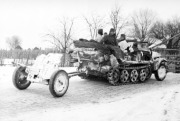
Sestra River, Russia, November 23, 1941: Operation Typhoon - the final attack on Moscow - was a two-pronged pincer movement combined with a frontal assault on the Russian capital. The northern pincer was the responsibility of Panzer-Gruppe 3. Participating in the attack was 2. Panzer-Division, just brought to the eastern front. On 23 November, after having advanced a week against heavy resistance, the division attacked toward the village of Davydkovo, only 60 km from Moscow. Its mechanized infantry battalion formed the spearhead.
Designer: Pär Worbis
ROAR Recommendation: 6.44
ROAR Record: German 24 (44%) - Russian 30 (56%)
FrF94 Death from Above
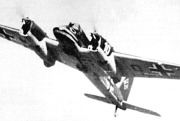
Oblivskaya Airfield, Russia, November 26, 1942: Operation Uranus was in full swing. Russian mechanized formations had smashed through and effectively destroyed the poorly equipped armies of the German allies protecting the flanks of the 6. Armee at Stalingrad. One exception was the Rumanian Major Rasconescu's battalion, which retreated in good order with all its equipment. At the airfield at Obliviskaya, the home of the Fliegerkorps VIII headquarters, Rasconescu's unit was dragooned into Gruppe Stahel. On 26 November the Russian 8th Cavalry Corps hit the airfield.
Designer: Mattias Rönnblom
ROAR Recommendation: 6.0
ROAR Record: Axis 6 (67%) - Russian 3 (33%)
FrF95 Blood Red Snow
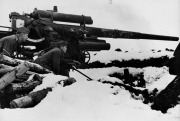
Rychovskiy, Russia, December 11, 1942: Since the early morning hours Russian artillery had shelled the positions of Günter Koschorrek and his small group, defending a bridgehead on the high ground across the river Don, some twenty kilometers south-west of Kalach. With the noise of the bursting shells, and crouched down in their trenches, they failed to notice Russian T-34s and their tank desant. At the last minute, the crew of their supporting 88 mm gun spotted the Russian menace, and knocked out of the lead tank. The remaining T-34s charged the German positions.
Designer: Mattias Rönnblom
ROAR Recommendation: 6.29
ROAR Record: German 9 (75%) - Russian 3 (25%)
FrF96 The Flying Circus
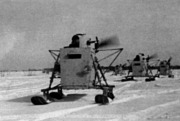
Sychovka, Russia, March 6, 1943: On 2 March, the Volga bridge in Rzhev was blown, marking the start of the German withdrawal from the Rzhev salient. The Russian 31st Army was first out to pursuit, but made only modest gains in the face of heavy artillery fire, with its commanders hesitating about the German intentions. Operation Mars, the extremely costly Russian failure to eliminate the salient in late 1942, was still fresh in memory. Four days into the pursuit, one of the 31st Army's mobile groups approached Sychyovka. Outside the town lay two German infantry regiments.
Designer: Mattias Rönnblom
ROAR Recommendation: 5.67
ROAR Record: German 2 (40%) - Russian 3 (60%)
FrF97 Wrecking the Rentals
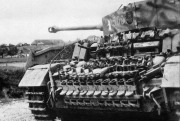
Kovel, Poland, April 10, 1944: In late March 1944, Russian rifle forces infiltrated unoccupied territory, and encircled the town of Kovel - an important railway hub, garrisoned only by miscellaneous German rear area units and SS troops on anti-partisan duty. On 5 April, battered elements of 5. SS-Panzer-Division Wiking had lifted the siege with an attack from the west. Protecting the SS men's left flank, expanding the breach northward, were 4. Panzer-Division forces. On 10 April, the Russians would show that they hadn't given up the thought of pocketing Kovel.
Designer: Mattias Rönnblom
ROAR Recommendation: 6.18
ROAR Record: German 20 (59%) - Russian 14 (41%)
FrF98 Amerikanskaya Suka
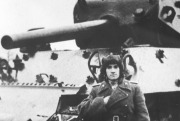
Zakręt, Poland, July 30, 1944: A large tank battle would be fought at the gates of Warsaw. On 30 July the 16th Tank Corps closed in on the city, to relieve some pressure on its sister formation, the 3rd Tank Corps, which was under attack from four German armored divisions to the east. The 16th broke through the German lines at Świder and seized Wiązowna, continued toward Warsaw - not only threatening to seize the city and its bridges across the Narew river, but also to cut off the divisions fighting to the east. At the village of Zakręt, German infantry and Jagdpanzers awaited the onslaught.
Designer: Mattias Rönnblom
ROAR Recommendation: 7.09
ROAR Record: German 23 (37%) - Russian 40 (63%)
FrF99 Boy Soldiers
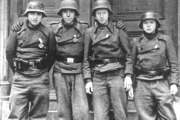
Südpark, Breslau, Germany, February 19, 1945: In February 1945, Breslau, the capital of Lower Silesia, had been declared a "fortress" by Adolf Hitler since long. The Volkssturm had been mobilized, make-shift barricades built, and houses fortified. A week into the siege of the city, the Russian 6th Army decided to tighten the noose. The 22nd Rifle Corps attacked from the south, into Breslau's beautiful villa district and the Südpark, seizing the railway embankment which arched around the south of the city in the process. Regimentgruppe Hitlerjugend was ordered to counter-attack.
Designer: Mattias Rönnblom
ROAR Recommendation: 6.22
ROAR Record: German 20 (65%) - Russian 11 (35%)
FrF100 Deutsch Lesson
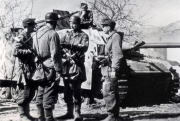
Mehrhoog, Germany, March 25, 1945: It was the second day of Operation Plunder. British and American divisions had crossed the river Rhine in force while airborne troops had landed to establish a bridgehead for them. Then it was time to extend that bridgehead before the Germans could organize a defensive line. In the morning of 25 March, British armored infantry supported by tanks and tank destroyers moved out to open a corridor for following units. The beginning of the attack started well, but then the British ran into an outpost of Fallschirm-Artillerie–Regiment 7.
Designer: Michael Koch
ROAR Recommendation: 6.39
ROAR Record: British 10 (32%) - German 21 (68%)